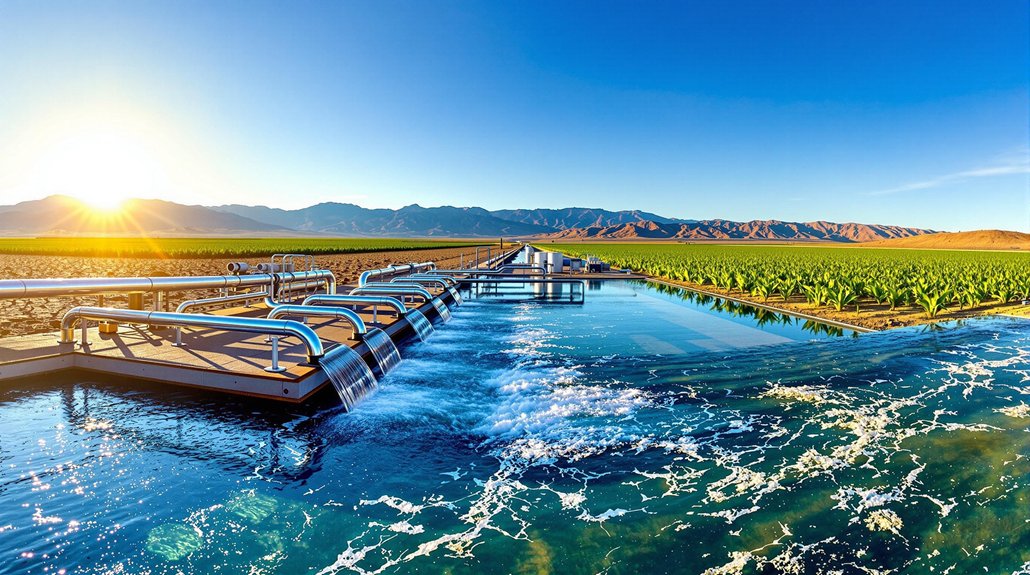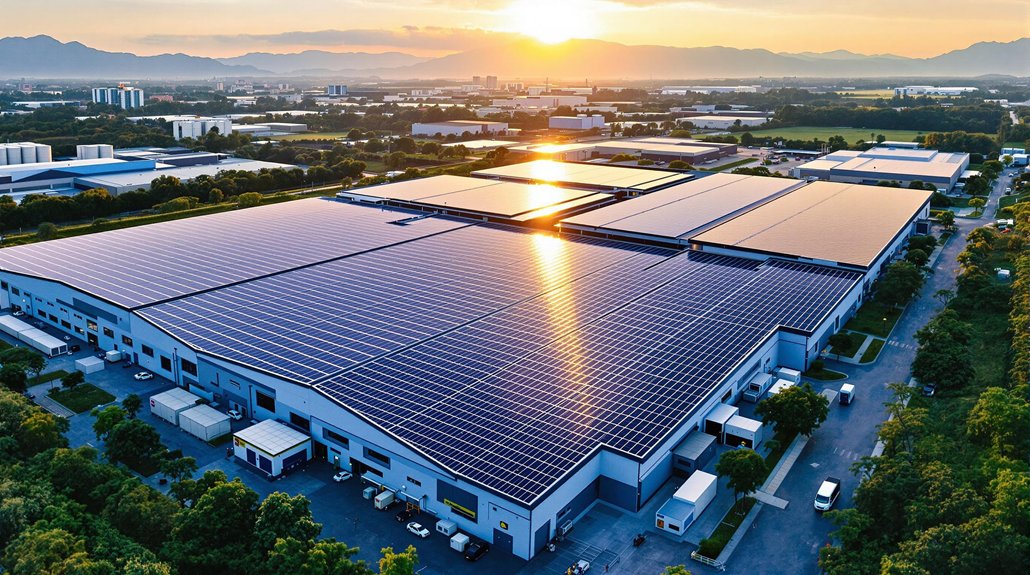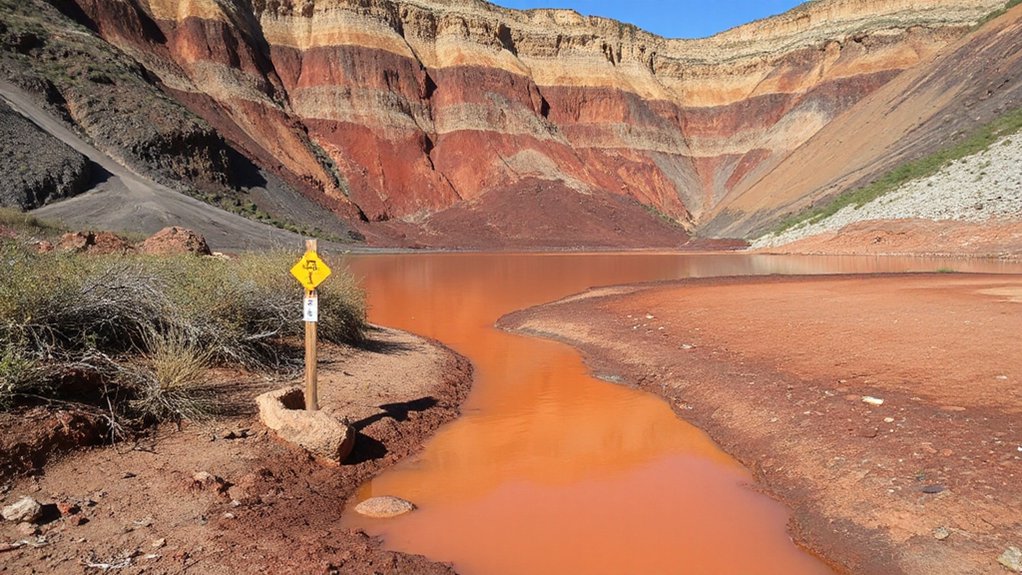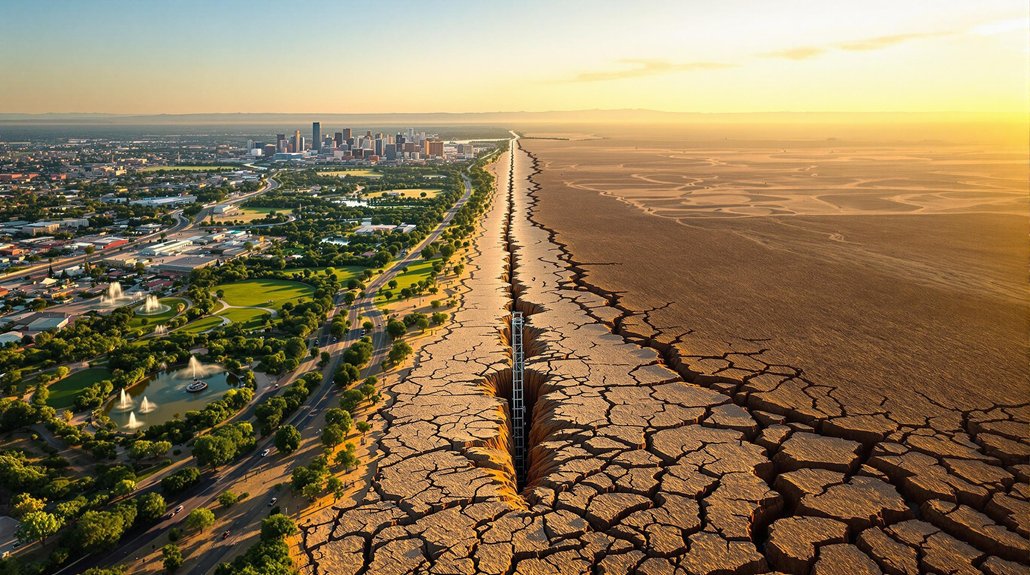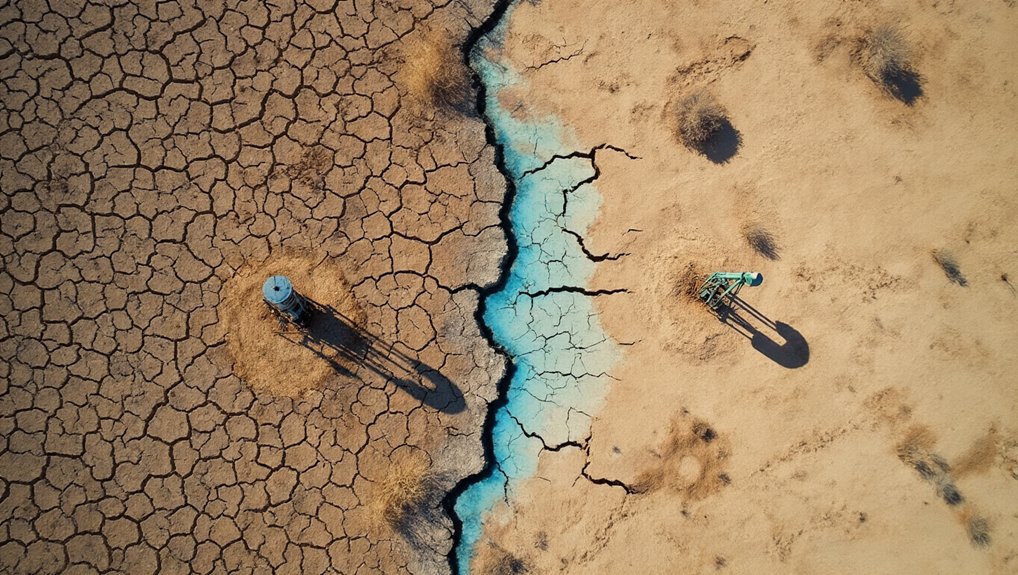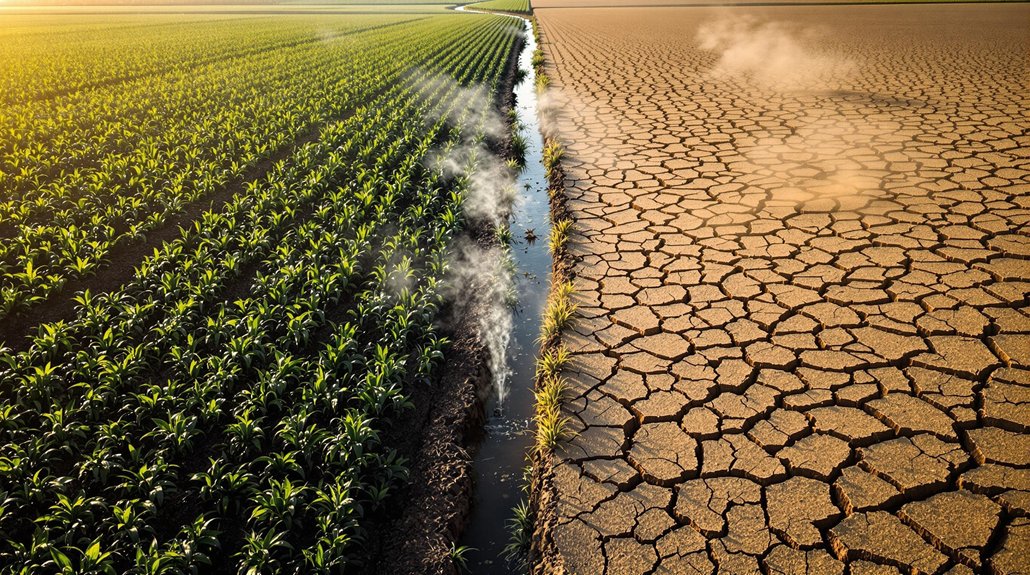Western states are turning to wastewater recycling as a drought solution. This “toilet-to-tap” approach transforms sewage into clean, usable water through advanced filtration processes. California has recycled wastewater for irrigation for over a century, and the practice is expanding across the Colorado River Basin. The process creates a drought-resistant water supply that’s often cleaner than bottled water. This liquid gold could add 1.3 million acre-feet annually if usage increases to 50%.
As the American West grapples with a decades-long drought, an unlikely hero is emerging from household bathrooms across the region: recycled wastewater.
California has been recycling wastewater for irrigation for over 100 years, but now this practice is expanding across Western states. What was once discarded is becoming a valuable resource in fighting water shortages.
Wastewater recycling transforms yesterday’s discards into today’s drought-fighting treasure across the parched Western landscape.
“We’re turning what people flush away into liquid gold,” says a water management official. The Colorado River Basin faces an annual shortfall of 2 to 4 million acre-feet of water, affecting millions of residents across multiple states.
This recycled water serves many purposes. In agriculture, treated wastewater retains nutrients that benefit crops. For cities, it provides a drought-proof supply that doesn’t depend on rainfall. One acre-foot of water (about 326,000 gallons) can supply multiple households for a year. Unlike solar or wind power, geothermal energy systems offer consistent performance regardless of weather conditions.
The practice is gaining momentum. Arizona has implemented a moratorium on new housing developments that can’t guarantee non-groundwater sources for 100 years. Meanwhile, Nevada leads in conservation efforts among drought-affected states. The growing demand for recycled wastewater is also spreading to mid-Atlantic regions like New Jersey that face water issues.
Advanced filtration and treatment processes make recycled water safe for consumption with fewer contaminants than some bottled water brands. Some programs focus on “direct potable reuse” (DPR) – commonly known as “toilet-to-tap” – where treated wastewater becomes drinking water.
Experts say increasing wastewater reuse to 50% in select states could add 1.3 million acre-feet annually to the region’s water supply. Federal funding is now supporting infrastructure development for water recycling projects.
Despite the benefits, challenges remain. Public perception issues around drinking recycled water persist. Infrastructure development is expensive and slow. And coordination across state lines complicates regional solutions.
Beyond drought resilience, recycled water offers environmental benefits by reducing fresh water extraction and the energy needed to transport water over long distances.
As populations grow in the arid West – Arizona’s has nearly doubled since its drought began – recycled wastewater isn’t just an emergency measure but increasingly a permanent part of water management strategy.
